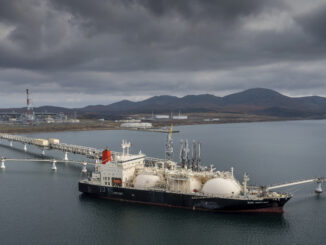
In the early hours of August 28, 2025, Ukrainian forces launched a significant drone assault on multiple Russian oil refineries, marking yet another escalation in the ongoing conflict’s economic warfare. The attacks targeted the Kuibyshev refinery in Samara Oblast and the Afipsky refinery in Krasnodar Krai, with reports also indicating hits on the nearby Novokuibyshevsk facility.
These strikes, part of a broader campaign that has intensified throughout August, have inflicted substantial damage, igniting massive fires and halting operations at critical sites. Eyewitness accounts and local media suggest that dozens of drones were involved in the assault on the Novokuibyshevsk refinery alone, while Russian authorities reported intercepting hundreds of drones across various regions during the overnight operation.
The Targeted Refineries and Their Capacities
The Kuibyshev refinery, owned by Rosneft and located approximately 800 kilometers from the Ukraine-Russia border, is a major processing hub with an annual capacity of around 7 million metric tons of oil, equivalent to about 140,000 barrels per day (bpd).
This represents roughly 2.5% of Russia’s total refining capacity.
Despite Russian air defenses being active, multiple drones penetrated the site’s perimeter, causing uncontained fires that continued to burn hours after the initial impacts.
The Afipsky refinery in Krasnodar Krai, managed by the SAFMAR group, was also struck, resulting in a blaze at a facility with a design capacity of 6.25 million tons per year, or approximately 120,000 bpd.
This accounts for about 2.2% of Russia’s overall refining output.
Local officials confirmed the fire broke out following the drone incursion, though they claimed it was quickly contained.
Additionally, the Novokuibyshevsk refinery—another Rosneft-operated site in Samara Oblast—suffered damage, with reports of halted production. Its primary distillation capacity stands at 8.8 million tons annually, or roughly 64.35 million barrels per year.
The facility had already been partially idled earlier in August due to prior strikes, exacerbating the latest disruptions.
The Scale of the Drone Assault
While exact figures on the number of drones vary, Ukrainian sources and independent reports indicate a coordinated, large-scale operation. For the Novokuibyshevsk site, eyewitnesses described “at least dozens” of drones overwhelming defenses, leading to widespread smoke and flames across the facility.
Broader Russian claims suggest hundreds of drones targeted various regions that night, with some diverted as decoys—such as those aimed at Crimea—to mislead defenses and allow strikes on high-value energy assets.
Ukrainian military intelligence has credited domestically produced “Liutyi” (Fierce) UAVs for the precision hits on the Kuibyshev refinery.
This attack is the 13th refinery strike in August alone, highlighting Ukraine’s growing capability to project force deep into Russian territory.
Impacts on Markets and Consumers
The immediate fallout from these strikes has been severe for Russia’s domestic energy market. Combined with earlier attacks this month, the disruptions have slashed Russia’s overall refining capacity by over 10-17%, equivalent to more than 1.1 million bpd offline.
Wholesale gasoline prices have surged to record highs, with AI-92 up 40% and AI-95 up 50% since the start of 2025.
Gas stations in regions like Primorsky Krai, Crimea, Kuban, and Zabaykalsky Krai are experiencing shortages, with some resorting to rationing via coupons or facing long queues.
Russian consumers, including motorists and industries reliant on diesel and gasoline, are bearing the brunt. The timing coincides with scheduled maintenance periods (August-October), when refining typically dips, forcing excess crude oil onto export markets.
This has led to deeper discounts on Russian crude, as major buyers like Indian state refiners decline autumn purchases, further eroding Kremlin revenues that fund the war effort.
On the global stage, reduced Russian refined product exports could tighten supplies of diesel and other fuels, potentially elevating prices in Europe and Asia. However, the influx of discounted Russian crude might exert downward pressure on international oil benchmarks, benefiting importers while hurting Russia’s fiscal position.
Analysts estimate that these strikes have already wiped out billions in potential export earnings for Moscow.Broader Implications for Energy SecurityThese drone attacks underscore Ukraine’s strategy of targeting Russia’s economic lifelines, aiming to degrade its ability to sustain military operations. With at least a dozen strikes on oil infrastructure in August, the cumulative damage now approaches 21% of Russia’s refining capacity over the past two weeks.
Russian officials have downplayed the incidents, claiming fires were extinguished and minimal damage occurred, but satellite imagery and local reports paint a picture of ongoing blazes and operational halts.
As the conflict drags on, such asymmetric tactics could reshape global energy dynamics, forcing Russia to divert resources to protect its vast hinterland infrastructure. For energy markets, the volatility introduced by these events serves as a stark reminder of geopolitical risks in an already tight supply chain. Stakeholders worldwide will be watching closely for signs of escalation or resolution.
Avoid Paying Taxes in 2025
Crude Oil, LNG, Jet Fuel price quote
ENB Top News
ENB
Energy Dashboard
ENB Podcast
ENB Substack







